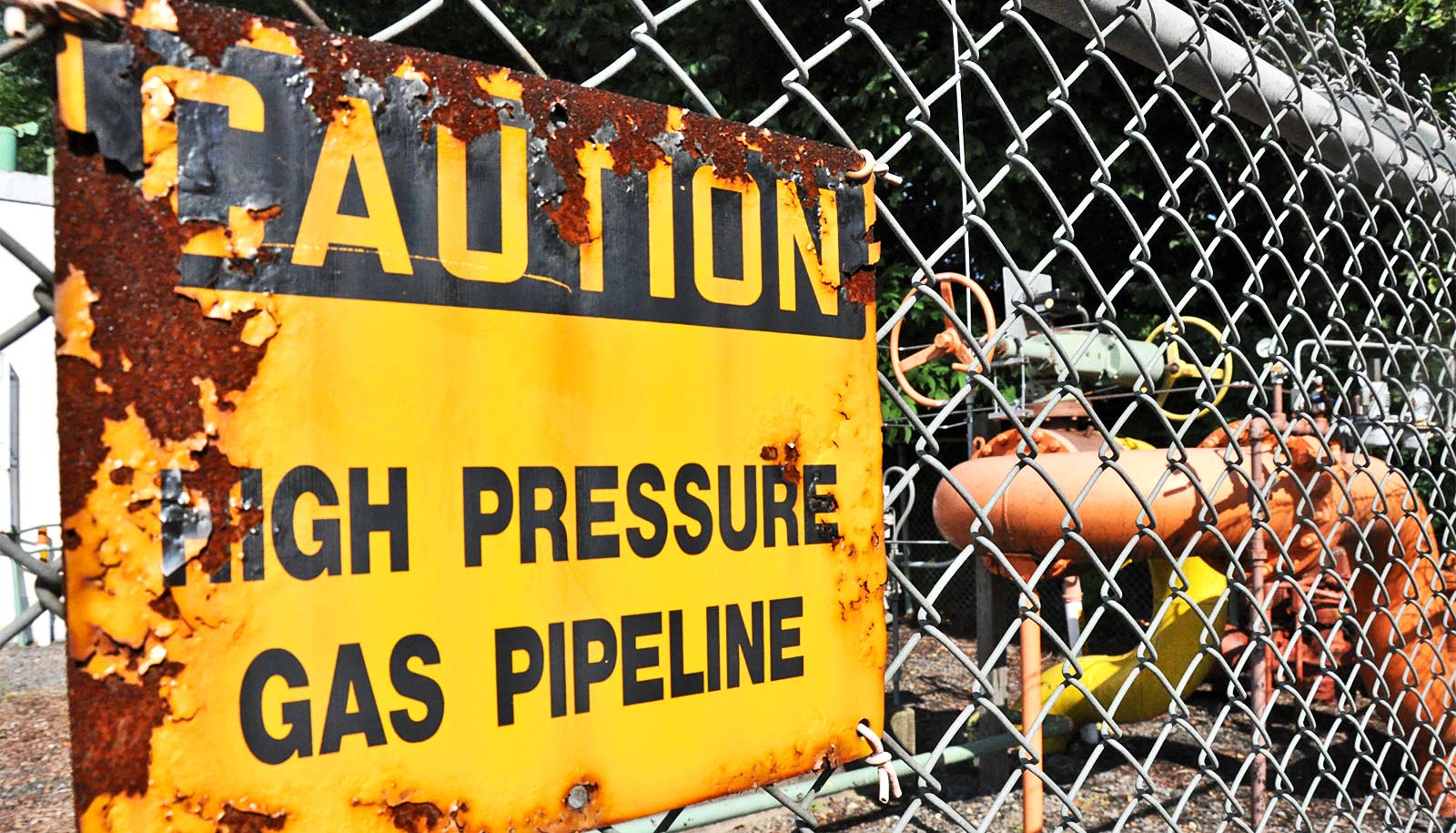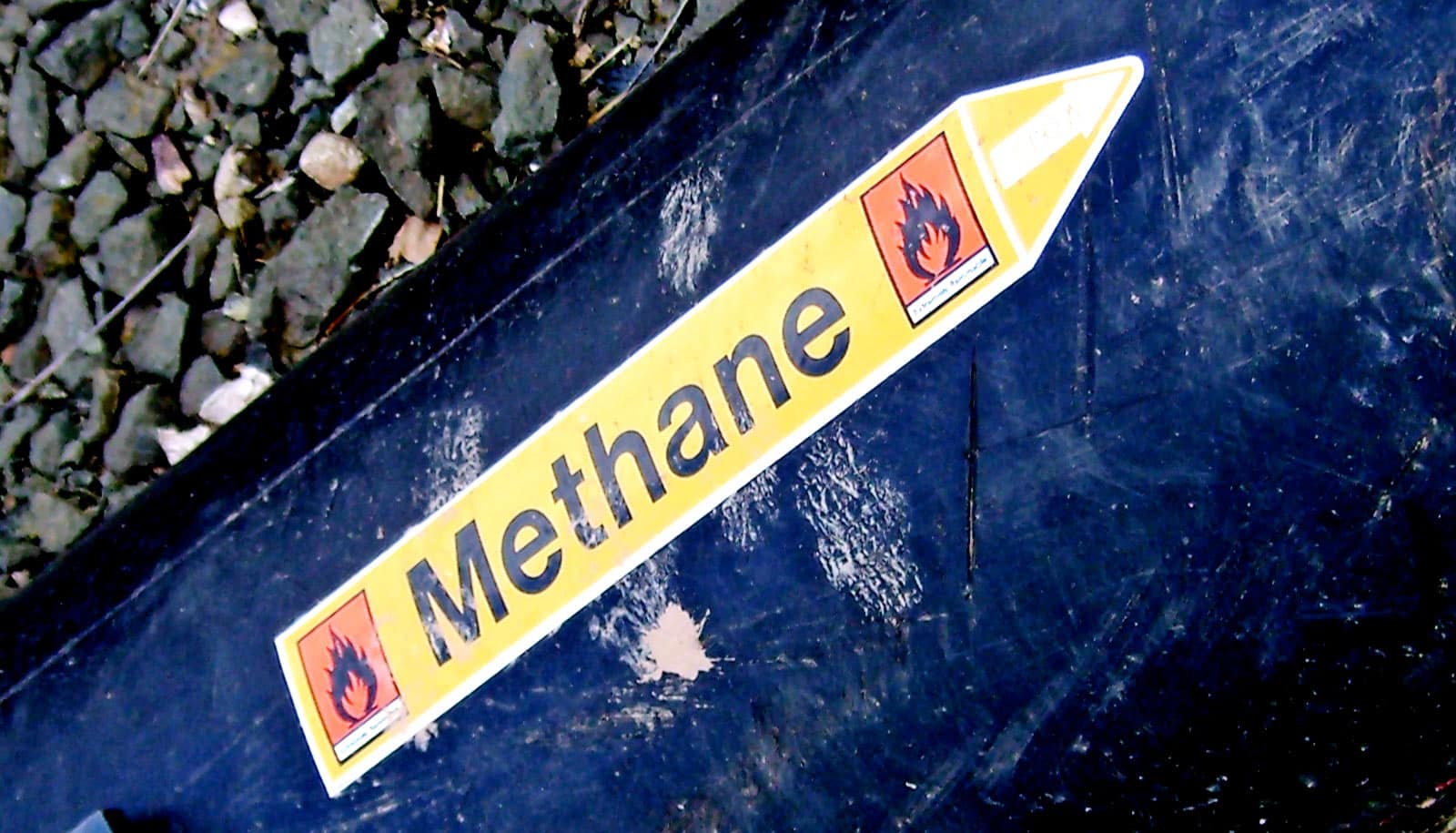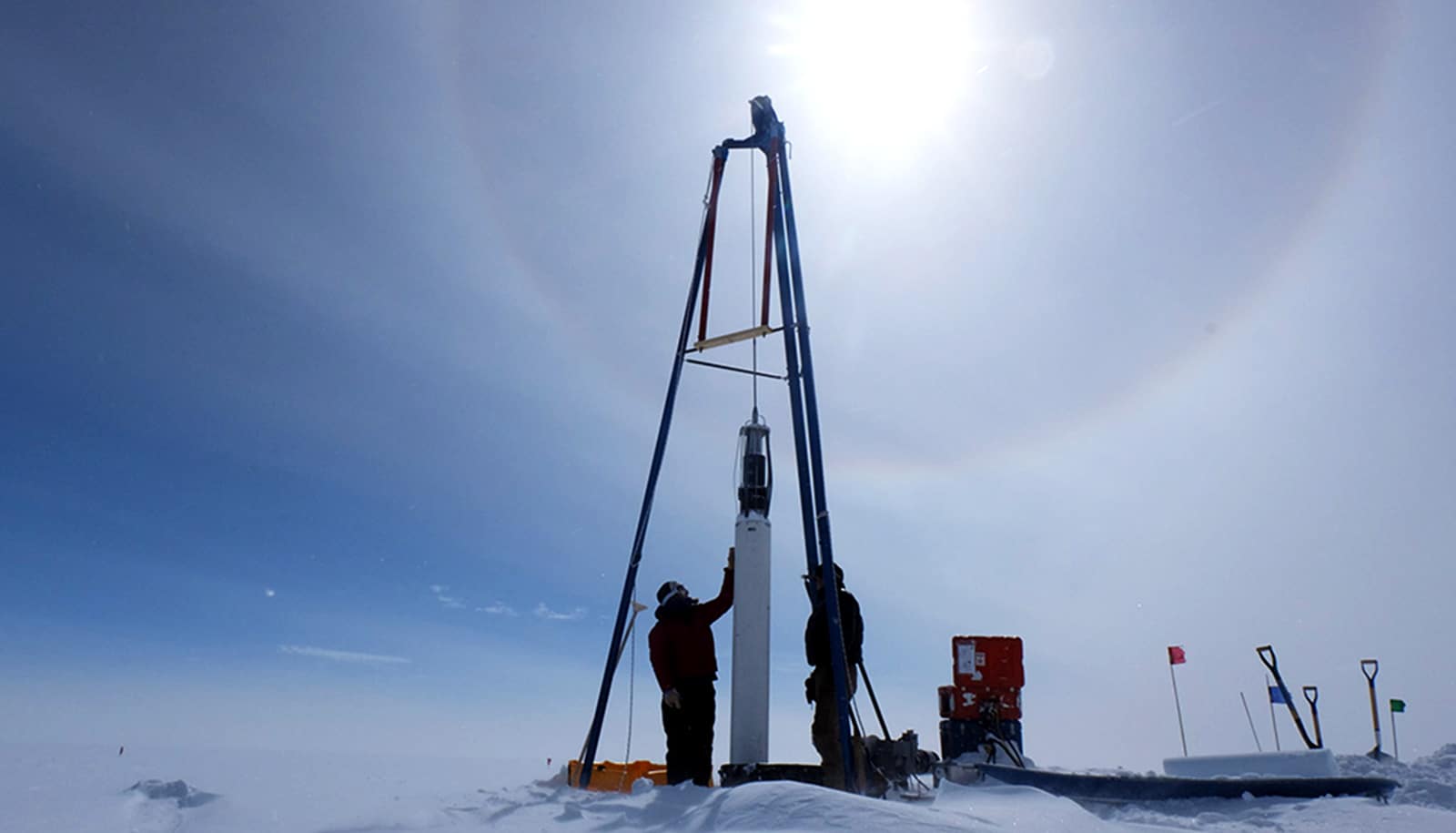Researchers have developed a catalyst that converts methane into chemicals used to make plastics and other materials.
Methane produces more warming than other greenhouse gases and is the subject of newly announced US emission restrictions. It’s hard to break down and keep out of the atmosphere.
“Remarkably, these novel catalysts run for 72 hours of continuous operation without any signs of deactivation…”
It’s not that the primary component of natural gas is chemically complex. A methane molecule is just one carbon atom and four hydrogens. But those carbon-hydrogen bonds are hard to break.
Typically, that involves high temperatures and mixing the flammable gas with oxygen to produce syngas to make methanol and hydrogen to make ammonia. That’s expensive and potentially explosive. Other conversion reactions aren’t very efficient and also produce the most abundant of the greenhouse gases, carbon dioxide.
So, is there another way to use methane and keep it out of the atmosphere? One that’s safe and efficient? One that returns value? One that helps fight climate change?
Yue Wu and his research group at Iowa State University have been looking for ways to do all that over several years of experimental failures and discoveries. Now, they and a group of collaborators have found and tested a catalyst technology that appears to be an answer.
“The results provided a potential solution to this long-time challenge and represented the best stability, conversion rate, and selectivity to convert methane to ethane or ethylene, two main precursors for the modern petrochemical industry,” according to a project summary written by Wu, professor in chemical engineering.
The catalyst consists of one or two layers of platinum, each layer just an atom thick, deposited on two-dimensional metal carbide structures called “MXenes.” In this case, the structures are made from carbon, molybdenum, and titanium.
Wu says his research group discovered the thin layers essentially allow every platinum atom to be used as a catalyst and prevents the formation of residues that cover and deactivate the platinum. That means less platinum is required to make the catalyst.
Wu says his group started studying carbides—combinations of carbon and metals—about five years ago with support from the Office of Naval Research. The original work was to identify the electrical and thermal properties of various carbides. But the work didn’t go as expected—the material’s thermal conductivity was much lower than predicted.
“You can think of this as a failure,” Wu says.
But, the researchers discovered the MXene surfaces are very active and able to absorb many molecules. And so, Wu’s research group began studying these MXenes as a potential catalyst.
“We had never seen carbide so active,” Wu says. “It’s usually very inert. It’s used, for example, for high-speed drill bits—the surface is hard and inert.”
They started using the technology to remove hydrogen from shale gas, the natural gas found in shale rock formations. That work evolved to study other reactions involving natural gas.
“Nobody tried to use these carbides for these high-volume reactions before,” Wu says.
Keys to the methane-to-ethane/ethylene conversion are making the carbides pure enough and making the surfaces clean enough to support the reactions, Wu says. Get it all right, and those reactions exhibit about 7% methane conversion with about 95% selectivity toward ethane/ethylene in a continuously operating fixed-bed reactor. The products can be turned into plastics and resins, such as the common and ubiquitous polyethylene plastic.
“Remarkably, these novel catalysts run for 72 hours of continuous operation without any signs of deactivation, indicating a promising start toward technologies suitable for exploitation on the industrial scale,” Wu wrote.
That’s all very good news, he says.
Methane emissions, after all, are such a contributor to climate change that world leaders took steps to restrict them during COP26, the recent United Nations summit on climate change in Glasgow, Scotland. President Joe Biden announced the US will take steps to restrict methane emissions from existing oil and gas operations. More than 100 countries also signed a Global Methane Pledge to reduce methane emissions by 30% over the next nine years.
The researchers’ new catalyst technology could advance those efforts to keep methane out of the atmosphere. Wu calls the technology “revolutionary,” saying it “opens the door to reducing the emission of methane and its combustion product, CO2, in the future.”
A paper on the discovery appears in the journal Nature Catalysis.
Wu and Yang Xiao, a senior research engineer in the Davidson School of Chemical Engineering at Purdue University, are corresponding authors. Zhe Li, who earned a doctoral degree at Iowa State in 2019 and is now a postdoctoral fellow at Johns Hopkins University, is the first author.
The Iowa State University Office of Innovation Commercialization is seeking a patent for the technology.
Source: Iowa State University



